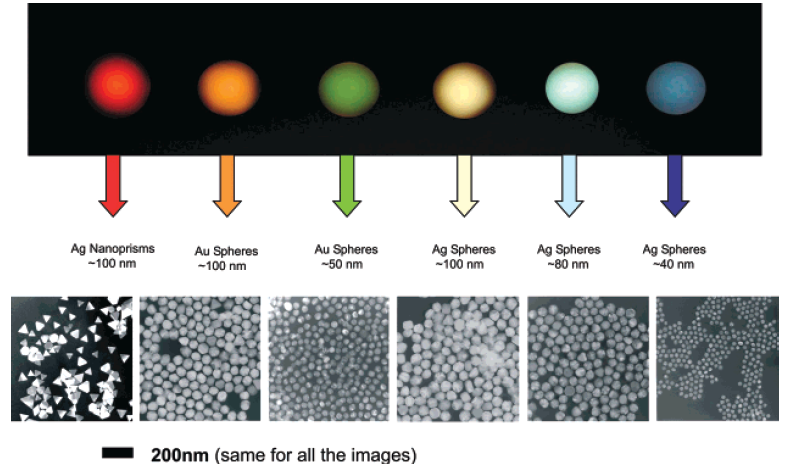Metallic nanoparticles have attracted scientist for nearly a century and now they are applied into different high technological fields. The huge interest is due to their fascinating and unique properties such as, high surface area to volume ratio which increase their activity in chemical processes and allow for the modification with different chemically functional groups. Others such as magnetic and optical properties which are related to the nano-size of the particles increased the areas where these particles are being applied. Now a days, metallic nanoparticles are used in biotechnology, magnetic separation, targeted drug delivery, and vehicles for gene and drug delivery. They are also used in industry to produced enhanced materials and composites and in the production of high-tech electronic devices. There are various examples that can be shown for the used metallic nanoparticles, their oxides and compounds which show their importance in recent technology.
Au (Gold) Nanoparticles for example is an old known substance which their history is referred to the Roman times when they were used to stain glass for decorative purposes. However, the modern discovery of gold nanoparticle colloidal solution was done by Michael Faraday’s work of the 1850s, when he observed that the colloidal gold solutions have properties that differ from the bulk gold. The optical properties of gold nanoparticles were distinctive where the color of the solution changes by the change of the size and the shape of the gold nanoparticles. Due to these unique optical properties, gold nanoparticles are the subject of substantial research, with enormous applications including biological imaging, electronics, and materials science.

Image retrieved from: http://chemistry.stackexchange.com/questions/38996/why-is-gold-so-popular-in-nanotechnology
Other example is Ag (Silver) Nanoparticles which are well known for their antimicrobial properties beside their optical properties. It is used as an antibacterial and disinfectant, even in some cases it finds uses in AIDS drugs. Manufacturers began to use silver nanoparticles in products such as washing machines, refrigerators, air conditioners, toys, clothing, food containers, and detergents. For instance, Samsung has created and marketed a material called Silver Nano, which includes silver nanoparticles on the surfaces of household appliances.
Posted by Mohammed ZABARA on November 07, 2016
Comments
Post a Comment